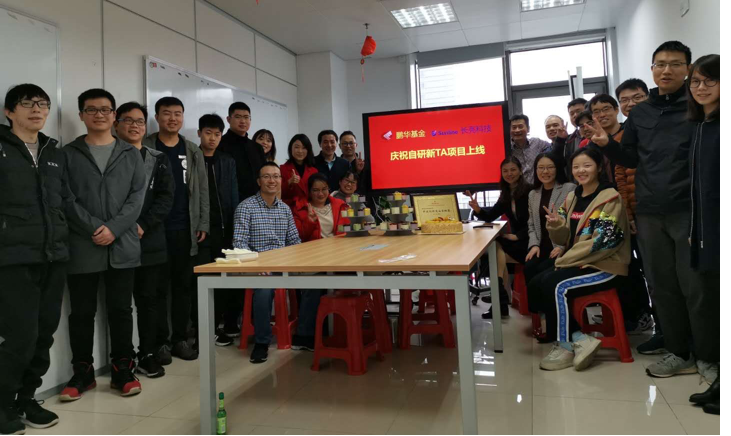In recent years, China's asset management market has expanded and evolved rapidly. Digitization is disrupting and changing consumer habits making digital transformation a must for traditional enterprises to remain competitive. In the face of the crowded wealth management market, the partial balance of the industry that has been maintained by traditional public funds for more than 20 years is gradually being broken and it is urgent to explore a path of digital transformation, innovation and change that is compatible with the development of big asset management.
However, TA system used by most fund companies today is still a closed architecture. With the sharp increase in transaction volume, the system architecture and performance can no longer meet the timeliness of clearing and unable to support the rapid advancement of business, resulting high maintenance pressure, inability to response in time, reduced channel and customer satisfactions and inability for the structure and performance to support the rapid development of the business.
Sunline and Penghua Fund jointly creates the new generation TA system
With leading technical strengths, self-developed SpringBoot and SpringCloud open source enhanced technical architecture as well as rich experiences in the financial core field, Sunline and Penghua Fund jointly create a new generation TA system to get rid of the hindrance caused by the legacy TA system, respond to the rapid development of the Internet, support the rapid expansion of the business, meet the response to massive data and improve the efficiency of the settlement. The system was officially launched in January 2019 and has been online for more than a year with reported average daily clearing transaction volume estimated at 10 million and clearing time decreased by 50% year-on-year.

Penghua Fund's new generation TA system is the industry's first and currently the only registration system based on big data architecture. The system innovatively adopts a big data and microservices hybrid architecture which is also the first in the industry and has achieved a breakthrough in clearing billion-level accounts with clearing efficiency 4 times higher than the systems commonly used in the industry.
The first advanced big data and microservices hybrid architecture
The new generation TA system adopts a microservice architecture. Each service has a single responsibility and is deployed independently, solving the problems of application complexity by decomposing a huge monolithic application into multiple services. At the same time, the Spring framework allows monolithic applications to be quickly expanded into distributed applications with SpringCloud, coping with a large number of concurrent data requests.
In order to ensure the timeliness of transaction clearing, big data technology has been adopted to provide high-throughput application data access to process terabytes or even petabytes of data, fully satisfying the needs of Penghua Fund’s rapid business expansion and rapid clearing of massive data, allowing the company to quickly respond to changing market demands.
Innovative products with hard core performance
Relying on innovative concepts and architecture, the new generation TA system is at the forefront of the field of fund company IT systems, helping Penghua Fund to achieve a number of outstanding functions:
· Supports rapid settlement of massive data with the introduction of a big data platform to support batch processing greatly improved the efficiency of clearing. It avoids the advantages of single-node server failure and system risks. At the same time, the open source system architecture is convenient for systematic understanding and learning, making it highly scalable and supportable.
· Unified account database completes the integration and data migration of the company's original TA systems, opens up all TA systems to share user data and consigns all the company's fund products by docking a single system, increasing the customer loyalty and overall activity of cooperation channels through product integration and linkage.
· Unifies monitoring platform, user management center (supports docking with AD and LDAP), task scheduling platform and monitors task execution status increases audit points to review whether specific tasks are performed normally. If abnormalities are found, the TA system synchronize corresponding responsible persons and gradually shift from manual operation and maintenance to automated operation and maintenance.
· The TA system project is an opportunity to build a unified large, medium and middle system, maximizing the value of customer information and customer holding information, conduct customer portraits, customer classifications and support marketing activities with thousands of people and using ‘technology + finance’ data marketing model to transform traditional fund sales methods.
· Improve the efficiency of version release and standard version. Build a one-click deployment continuous delivery platform and establish a rapid iteration and gray release mechanism.
· Separation of account information and transaction information. The account chain-transaction structure is adopted to complete the load balancing mechanism, maintaining the performance of the system and break the separation of account information and transaction information. Adopting Spring cloud architecture, the system is responsible for the application, confirmation, query and modification of client fund accounts and trading accounts, keeping response time to channel parties less than 50ms. At present, the account chain has been developed into an independent account center, the central system of the company's internal customer service and in conjunction with the company's CRM (customer relationship management) system.
Use agile development model for innovative practice
As the new generation TA system project involves a wide range and large investments, all links are at risk and there are no mature products on the market that can be used directly. Therefore, Penghua Fund decided to implement the joint new generation TA system.
In order to ensure smooth implementation of the project and deal with short project cycle as well as uncontrollable quality issues, Sunline and Penghua Fund decided to adopt the popular agile development model to improve the software team's demand analysis and planning capabilities, delivery management capabilities and system planning capabilities, enhancing the accuracy of system requirements analysis and management as well as the flexibility and scalability of system architecture. Focusing on business value realization, the system greatly eliminating resource waste from the source.
· In terms of organizational structure, the system transforms from a project system to a product system, making the team responsible for the product and reduce external interference. The product team is also responsible for product operation, achieving smooth DevOps and aligning the goals of development and operation and maintenance.
· In terms of product value discovery, the ‘User Story Mapping’ method is introduced. From the perspective of the end-to-end business boundary (rather than the target system as the boundary), relevant stakeholders participate in the analysis of the business scenario with a complete value realization unit as the input requirement (user story) of product development. The delivery unit of the product group is no longer a separate function but an end-to-end value realization.
· In the priority management of development process, the number of products in progress is limited through the swim lanes of the Kanban so that the team always focuses on the few user stories with the highest value, ensuring that only the user stories with the highest current value will be implemented.
· Use the method of ‘built-in quality’ to ensure complete value delivery, accelerate value flow and delivery speed. If any user story finds problems and bugs in the test, it will be resolved in priority and the user story will be regarded as value delivery after the production release.
· Before testing, ‘instantiating requirements’ is used in the user story refinement stage, a scenario-based test case is discussed and formed as the acceptance standard for user story development which greatly eliminates the waste of later modification or rework when problems are found in the later test.
· Continuous product improvement driven by operational data. Thanks to the continuous delivery of business value, the team can continuously collect operational data and with the goal of operational improvement, the operational data is analyzed as input for continuous product improvement. The closed loop product evolution makes product improvement based on objective data basis rather than human subjective judgment.
The new generation TA system helps Penghua Fund improve quality and efficiency
Since the launch of the new generation TA system of Penghua Fund, a total of 26 channels have been docked through new access and channel migration, undertaking wealth management services for banks, securities firms and other companies in the financial industry. The channel access time has been reduced from the original two weeks to two months of joint debugging and testing work respectively to one week, greatly improving loyalty of the cooperation channels and overall satisfaction.
With its superior performance, Penghua Fund's new-generation TA system has successively won industry heavyweight awards such as ‘Outstanding Contribution Award for Scientific and Technological Innovation in Financial Industry-Development and Innovation Contribution Award’ as well as ‘IDC Financial Industry Technology Application Scenario-Best Innovation Award’.
Through original architecture upgrades and lean innovative practices, Penghua Fund's new generation TA system project went live as scheduled, successfully supporting the tempering of super businesses such as Double Eleven and forging a series of perfect product forms and enterprise-level capabilities. The successful implementation of the project has also brought Penghua Fund to a new level in its IT construction capabilities. Penghua Fund will also use the new generation TA system as an opportunity to establish a set of services or technologies that serve the entire system of Penghua Fund China and Taiwan to form an ecosystem suitable for fund companies, created industry barriers and promoted business innovation.



